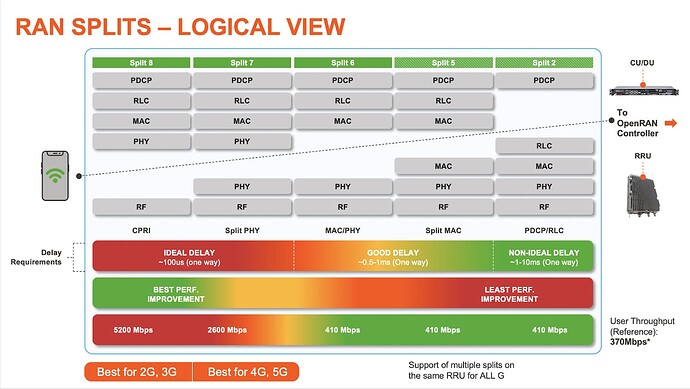Sharing my view on this:
The primary focus of operators :
- Provide best network performance to the user
- Need to support specific QoS per services as low latency, high throughput for urban areas
- Support for specific user density and load demand per given geographical areas.
- Reduce costs
Open RAN proposes using option 7-2 which splits the physical layer (PHY) into a high-PHY and a low-PHY.
For option 7-2, the uplink (UL), CP removal, fast Fourier transform (FFT), digital beamforming (if applicable), and prefiltering (for PRACH (Physical Random Access Channel) only) functions all occur in the RU. The rest of the PHY is processed in the DU.
For the downlink (DL), the inverse FFT (iFFT), CP addition, precoding functions, and digital beamforming (if applicable) occur in the RU, and the rest of the PHY processing happens in the DU.
RAN Split Options (Source NGNM 2018)
2G, 3G, and 4G use Common Public Radio Interface (CPRI), which is passed on an option 8 split. Moving to the 7-2 split reduces traffic between the DU and RU. O-RAN has specified a version of the 7-2 split. The 7.2x split is the best balance between bringing this technology to market quickly and deployment cost. It reduces confusion about split specifics while making traffic reduction gains and improvements.
Operators must make trade-offs between latency requirements and fronthaul bandwidth availability, especially for the splits 2,8, and 7-2.
Hence, it’s normal to focus more on the physical layer than the other layers. Once the disaggregation is happening, hardware and software will become interoperable, which gives the liberty for operator to use the best combination.
Even though 7.2 split has latency, it provides great performance with split on phy.
In addition to this the processing also getting flexible with hi&low splits in phy layer.
Corrections are welcomed 

